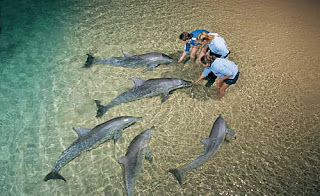
The
historic town of Mostar, spanning a deep valley of the Neretva River, developed
in the 15th and 16th centuries as an Ottoman frontier town and during the
Austro-Hungarian period in the 19th and 20th centuries. Mostar has long been
known for its old Turkish houses and Old Bridge, Stari Most, after which it is
named. In the 1990s conflict, however, most of the historic town and the Old
Bridge, designed by the renowned architect Sinan, was destroyed. The Old Bridge
was recently rebuilt and many of the edifices in the Old Town have been
restored or rebuilt with the contribution of an international scientific
committee established by UNESCO. The Old Bridge area, with its pre-Ottoman,
eastern Ottoman, Mediterranean and western European architectural features, is
an outstanding example of a multicultural urban settlement. The reconstructed
Old Bridge and Old City of Mostar is a symbol of reconciliation, international
co-operation and of the coexistence of diverse cultural, ethnic and religious
communities.
Justification for
Inscription
Criterion
(vi): With
the “renaissance” of the Old Bridge and its surroundings, the symbolic power
and meaning of the City of Mostar - as an exceptional and universal symbol of
coexistence of communities from diverse cultural, ethnic and religious
backgrounds - has been reinforced and strengthened, underlining the unlimited
efforts of human solidarity for peace and powerful co-operation in the face of
overwhelming catastrophes.
Further information
The Old Bridge area of the Old City of Mostar, with its
exceptional multicultural (pre-Ottoman, eastern Ottoman, Mediterranean and
western European) architectural features, and satisfactory interrelationship
with the landscape, is an outstanding example of a multicultural urban
settlement. The qualities of the site's construction, after the extremely
ravaging war damage and the subsequent works of renewal, have been confirmed by
detailed scientific investigations. These have provided proof of exceptionally
high technical refinement in the skill and quality of the ancient
constructions, particularly of the Old Bridge. Of special significance is the
Radoboija stream, which enters the Neretva on its right bank. This provided a
source of water for the growing settlement, and from it springs a number of
small canals used for irrigation and for driving the wheels of water-mills.

Little
is known of Mostar in the medieval period, although the Christian basilicas of
late antiquity continued in use. The name of Mostar is first mentioned in a
document of 1474, taking its name from the bridge-keepers (mostari ); this refers to the existence of a
wooden bridge from the market town on the left bank of the river which was used
by soldiers, traders, and other travellers. At this time it was the seat of a kadiluk (district with a regional judge).
Because it was on the trade route between the Adriatic and the mineral-rich
regions of central Bosnia, the settlement spread to the right bank of the
river. It became the leading town in the Sanjak of Herzegovina and, with the
arrival of the Ottoman Turks from the east, the centre of Turkish rule.

The
town was fortified between 1520 and 1566, and the bridge was rebuilt in stone.
The second half of the 16th century and the early decades of the 17th century
were the most important period in the development of Mostar. Religious and
public buildings were constructed, concentrated on the left bank of the river,
in a religious complex. At the same time many private and commercial buildings,
organized in distinct quarters, known as mahalas (residential) and the bazaar,
were erected.





















































